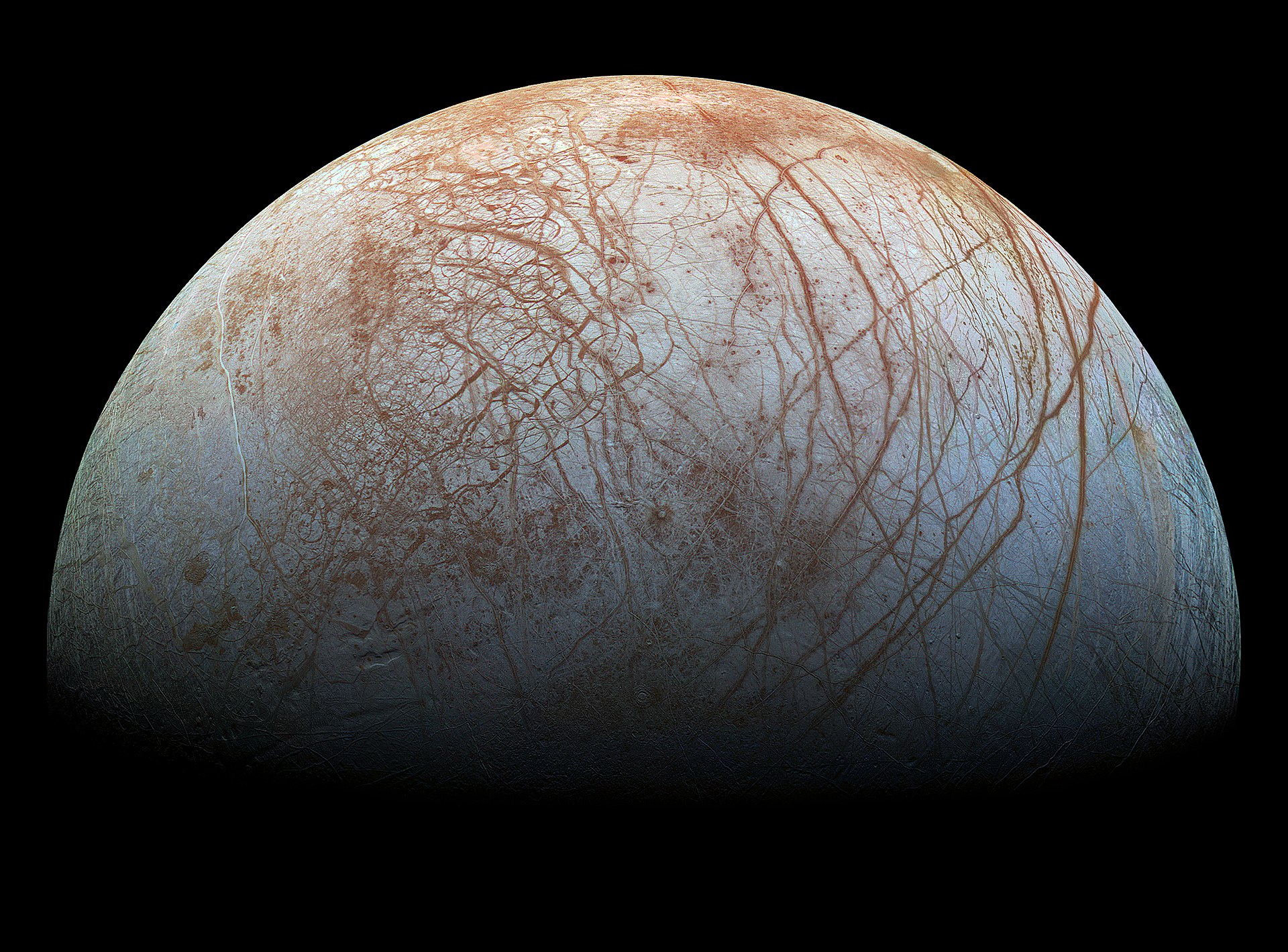On Jupiter’s icy moon Europa, powerful eruptions may spew into space, raising questions among hopeful astrobiologists on Earth: What would blast out from miles-high plumes? Could they contain signs of extraterrestrial life? And where in Europa would they originate? A new explanation now points to a source closer to the frozen surface than might be expected.
Rather than originating from deep within Europa’s oceans, some eruptions may originate from water pockets embedded in the icy shell itself, according to new evidence from researchers at Stanford University, the University of Arizona, the University of Texas, and NASA’s Jet Propulsion Laboratory.

Using images collected by the NASA spacecraft Galileo, the researchers developed a model to explain how a combination of freezing and pressurization could lead to a cryovolcanic eruption, or a burst of water. The results, published in Geophysical Research Letters, have implications for the habitability of Europa’s underlying ocean — and may explain eruptions on other icy bodies in the solar system.
Harbingers of life?
Scientists have speculated that the vast ocean hidden beneath Europa’s icy crust could contain elements necessary to support life. But short of sending an exploratory submersible to the moon, it’s difficult to know for sure. That’s one reason Europa’s plumes have garnered so much interest: If the eruptions are coming from the subsurface ocean, the elements could be more easily detected by a spacecraft like the one planned for NASA’s upcoming Europa Clipper mission.

But if the plumes originate in the moon’s icy shell, they may be less hospitable to life, because it is more difficult to sustain the chemical energy to power life there. In this case, the chances of detecting habitability from space are diminished. Lead author Gregor Steinbrügge said:
“Understanding where these water plumes are coming from is very important for knowing whether future Europa explorers could have a chance to actually detect life from space without probing Europa’s ocean.”
The researchers focused their analyses on Manannán, an 18-mile-wide crater on Europa that was created by an impact with another celestial object some tens of millions of years ago. Reasoning that such a collision would have generated a tremendous amount of heat, they modeled how the melting and subsequent freezing of a water pocket within the icy shell could have caused the water to erupt. Co-author Don Blankenship said:
“The comet or asteroid hitting the ice shell was basically a big experiment which we’re using to construct hypotheses to test. The polar and planetary sciences team at UTIG are all currently dedicated to evaluating the ability of this instrument to test those hypotheses.”
The model indicates that as Europa’s water transformed into ice during the later stages of the impact, pockets of water with increased salinity could be created on the moon’s surface. Furthermore, these salty water pockets can migrate sideways through Europa’s ice shell by melting adjacent regions of less brackish ice, and consequently become even saltier in the process. Steinbrügge said:
“We developed a way that a water pocket can move laterally — and that’s very important. It can move along thermal gradients, from cold to warm, and not only in the down direction as pulled by gravity.”
A salty driver
The model predicts that when a migrating brine pocket reached the center of Manannán crater, it became stuck and began freezing, generating pressure that eventually resulted in a plume, estimated to have been over a mile high. The eruption of this plume left a distinguishing mark: a spider-shaped feature on Europa’s surface that was observed by Galileo imaging and incorporated into the researchers’ model. Co-lead author Joana Voigt said:
“Even though plumes generated by brine pocket migration would not provide direct insight into Europa’s ocean, our findings suggest that Europa’s ice shell itself is very dynamic.”
The relatively small size of the plume that would form at Manannán indicates that impact craters probably can’t explain the source of other, larger plumes on Europa that have been hypothesized based on Hubble and Galileo data, the researchers say. But the process modeled for the Manannán eruption could happen on other icy bodies — even without an impact event. Voigt said:
“Brine pocket migration is not uniquely applicable to Europan craters. Instead, the mechanism might provide explanations on other icy bodies where thermal gradients exist.”
The study also provides estimates of how salty Europa’s frozen surface and ocean may be, which in turn could affect the transparency of its ice shell to radar waves. The calculations, based on imaging from Galileo from 1995 to 1997, show Europa’s ocean may be about one-fifth as salty as Earth’s ocean — a factor that will improve the capacity for the Europa Clipper mission’s radar sounder to collect data from its interior.
The findings may be discouraging to astrobiologists hoping Europa’s erupting plumes might contain clues about the internal ocean’s capacity to support life, given the implication that plumes do not have to connect to Europa’s ocean. However, the new model offers insights toward untangling Europa’s complex surface features, which are subject to hydrological processes, the pull of Jupiter’s gravity, and hidden tectonic forces within the icy moon. Co-author Dustin Schroeder said:
“This makes the shallow subsurface – the ice shell itself – a much more exciting place to think about. It opens up a whole new way of thinking about what’s happening with water near the surface.”
Provided by: Danielle Torrent Tucker, Stanford University [Note: Materials may be edited for content and length.]









